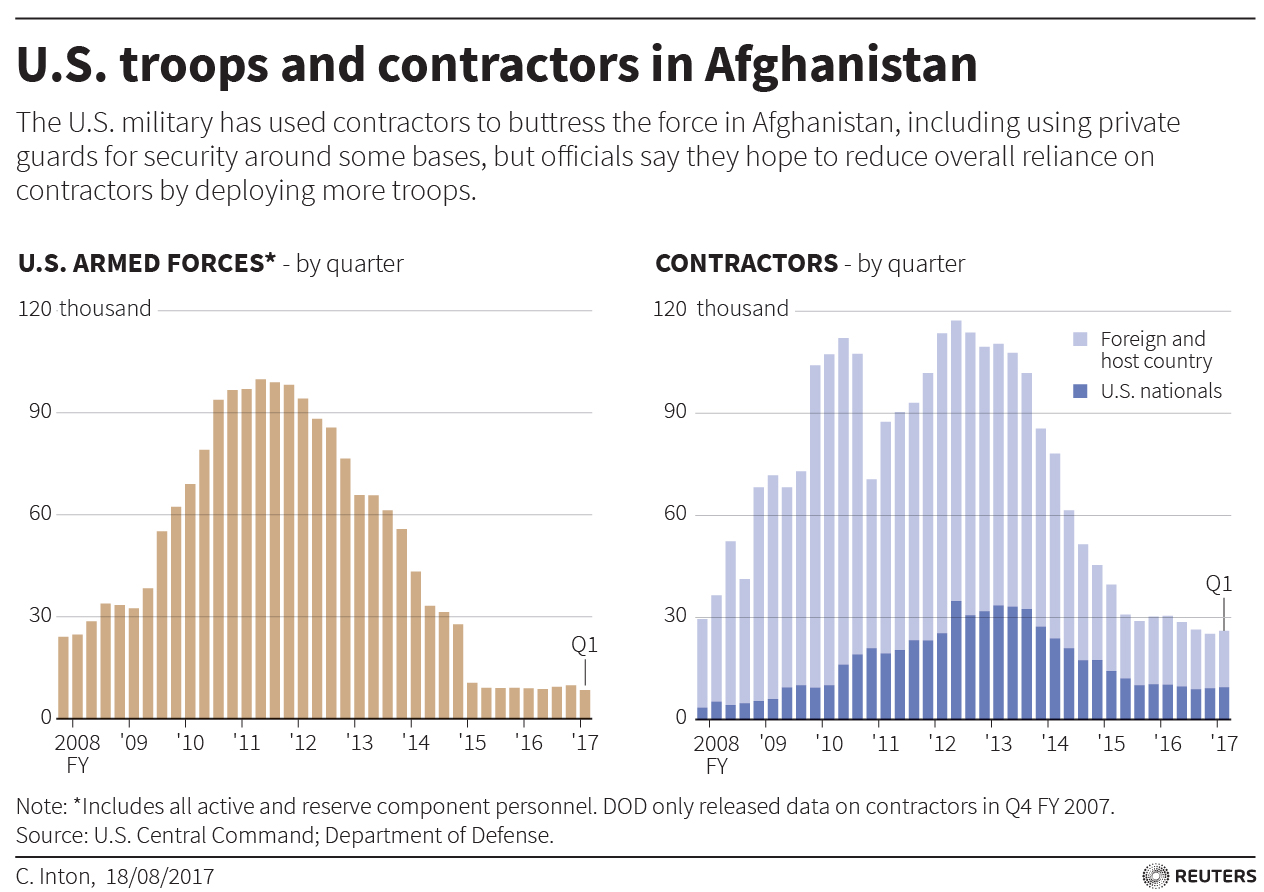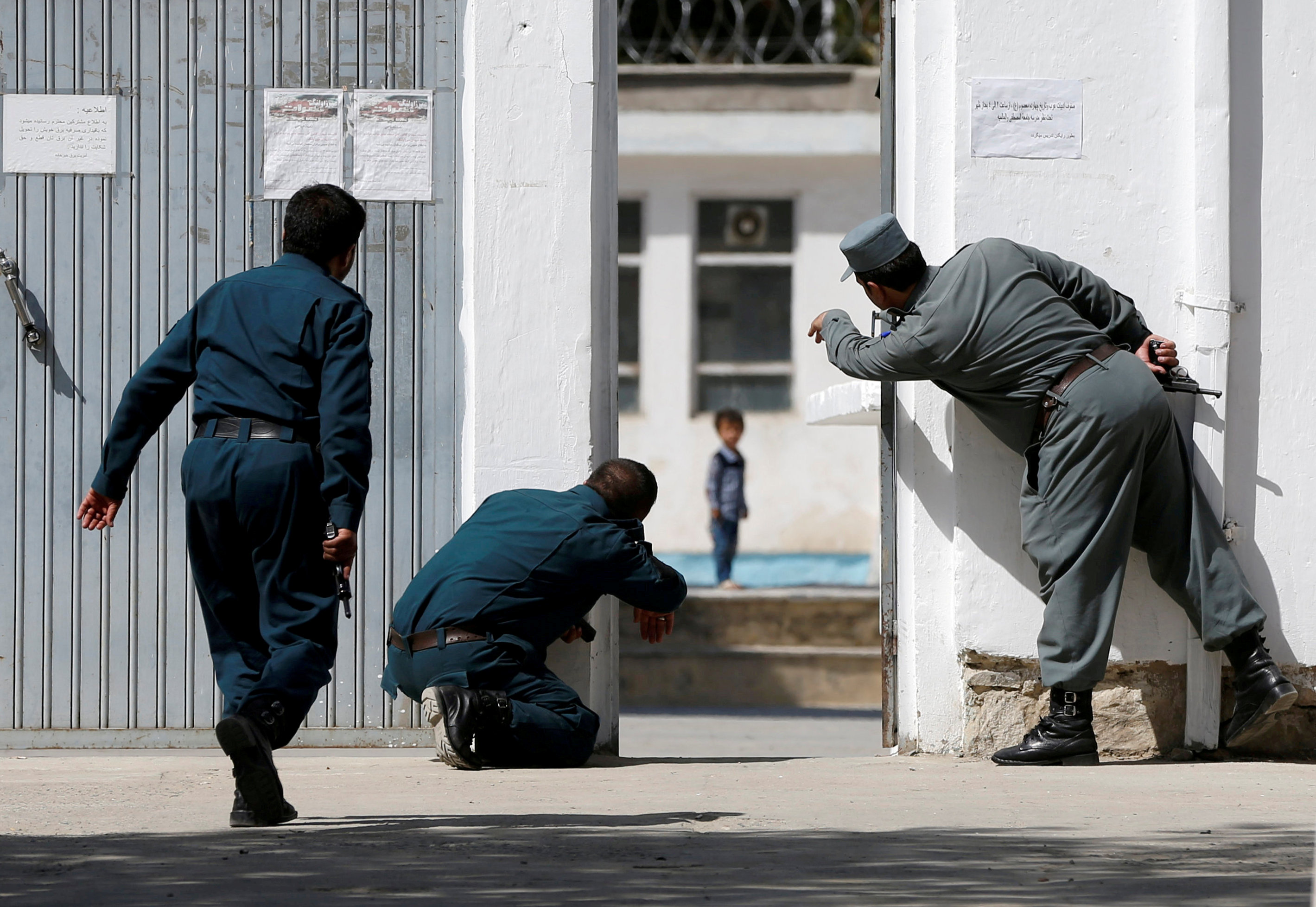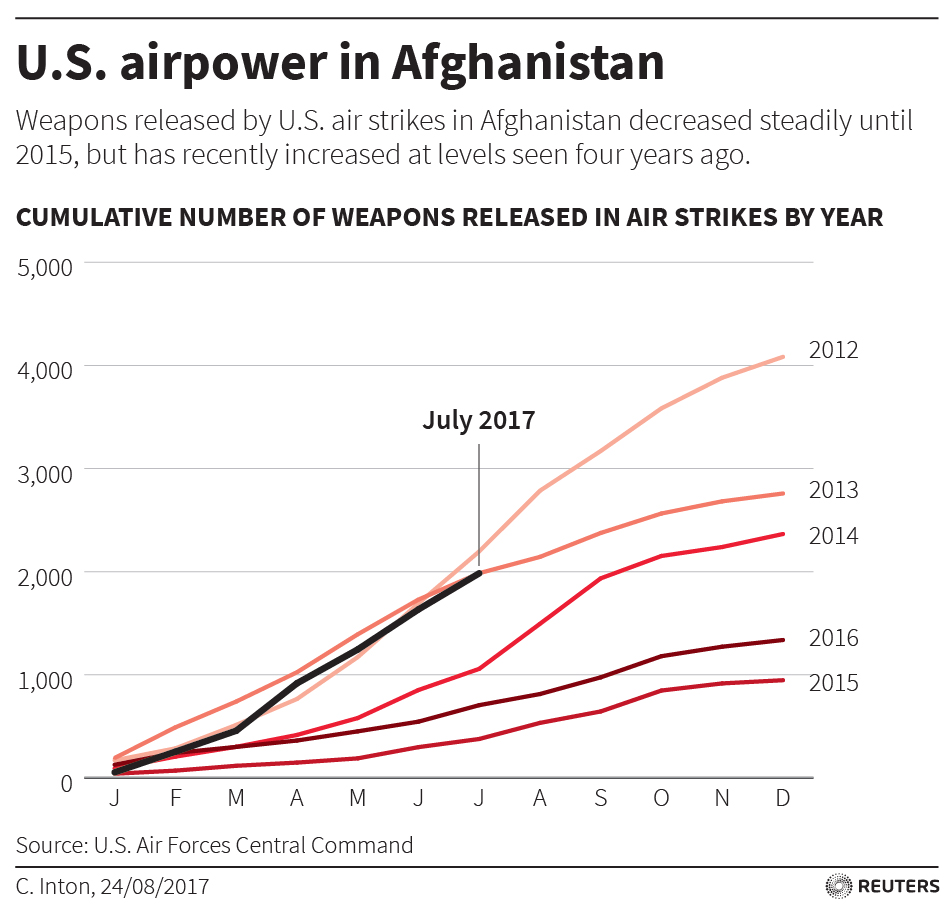
By Steve Holland and Hamid Shalizi
WASHINGTON/KABUL (Reuters) – President Donald Trump committed U.S. troops to an open-ended war in Afghanistan, a decision the Afghan government welcomed on Tuesday but which Taliban insurgents warned would make the country a “graveyard for the American empire”.
Trump offered few specifics in a speech on Monday but promised a stepped-up military campaign against the Taliban who have gained ground against U.S.-backed Afghan government forces. He also singled out Pakistan for harboring militants in safe havens on its soil.
Trump, who had in the past advocated a U.S. withdrawal, acknowledged he was going against his instincts in approving the new campaign plan sought by his military advisers but said he was convinced that leaving posed more risk.
“The consequences of a rapid exit are both predictable and unacceptable,” he said. “A hasty withdrawal would create a vacuum that terrorists, including ISIS and al Qaeda, would instantly fill.”
Still, he promised an end to “nation-building” by U.S. forces in what has become American’s longest war and stressed that ultimately Afghanistan’s struggling police and army must defeat the Taliban.
“The stronger the Afghan security forces become, the less we will have to do. Afghans will secure and build their own nation and define their own future. We want them to succeed.”
Most of the approximately 8,400 U.S. troops in Afghanistan work with a NATO-led training and advising mission, with the rest part of a counter-terrorism force that mostly targets pockets of al Qaeda and Islamic State fighters.
While Trump said he would not discuss troop levels or details of the new strategy, U.S. officials said on Monday he had signed off on Defense Secretary James Mattis’ plans to send about 4,000 more troops to Afghanistan.
Afghan President Ashraf Ghani, in welcoming the strategy, said it would increase the capacity of the training mission for Afghan forces, including enhancing its fledgling air force and doubling the size of the Afghan special forces.
“I am grateful to President Trump and the American people for this affirmation of support … for our joint struggle to rid the region from the threat of terrorism,” Ghani said in a statement.
The Taliban swiftly condemned Trump’s decision to keep American troops in Afghanistan without a withdrawal timetable, vowing to continue “jihad” until all U.S. soldiers were gone.
“If the U.S. does not pull all its forces out of Afghanistan, we will make this country the 21st century graveyard for the American empire,” Taliban spokesman Zabihullah Mujahid said in a statement.
Republican Trump, who had criticized his predecessors for setting deadlines for drawing down troops in Iraq and Afghanistan, declined to put a timeline on expanded U.S. operations in Afghanistan.
Trump now inherits the same challenges as George W. Bush and Barack Obama, including a stubborn Taliban insurgency and a weak, divided Kabul government. He is laying the groundwork for greater U.S. involvement without a clear end in sight or providing specific benchmarks for success.
‘NO BLANK CHECK’
Trump warned that U.S. support “is not a blank check,” and insisted he would not engage in “nation-building,” a practice he has accused his predecessors of doing at huge cost.
Trump insisted through his speech that the Afghan government, Pakistan, India, and NATO allies step up their own commitment to resolving the 16-year conflict.
“We can no longer be silent about Pakistan’s safe havens,” he said.
Senior U.S. officials warned he could reduce security assistance for nuclear-armed Pakistan unless it cooperated more.
A Pakistani army spokesman said on Monday that Pakistan had taken action against all Islamist militants.
“There are no terrorist hideouts in Pakistan,” spokesman Major General Asif Ghafoor said.
Pakistan sees Afghanistan as a vital strategic interest. Obama sent Navy SEALs into Pakistan to kill al Qaeda chief Osama bin Laden, the architect of the Sept. 11, 2001, attacks that triggered the war in Afghanistan.
The Taliban government was overthrown by U.S.-backed Afghan forces in late 2001 but U.S. forces have been bogged down there ever since. About 2,400 U.S. troops have died in Afghanistan.
Trump expanded the U.S. military’s authority for American forces to target militant and criminal networks, warning “that no place is beyond the reach of American arms”.
“Our troops will fight to win,” he said.
Trump’s speech came after a months-long review of U.S. policy in which the president frequently tangled with his top advisers.
He suggested he was hoping for eventual peace talks, and said it might be possible to have a political settlement with elements of the Taliban.
He said he was convinced by his national security advisers to strengthen the U.S. ability to prevent the Taliban from ousting Ghani’s government.
“My original instinct was to pull out,” he said.

(Additional reporting by Ayesha Rascoe, David Alexander, Yeganeh Torbati and Jeff Mason in WASHINGTON, Mirwais Harooni in KABUL, and Jibran Ahmad in PESHAWAR; Writing by Steve Holland and Warren Strobel; Editing by Yara Bayoumy, Peter Cooney and Paul Tait)












